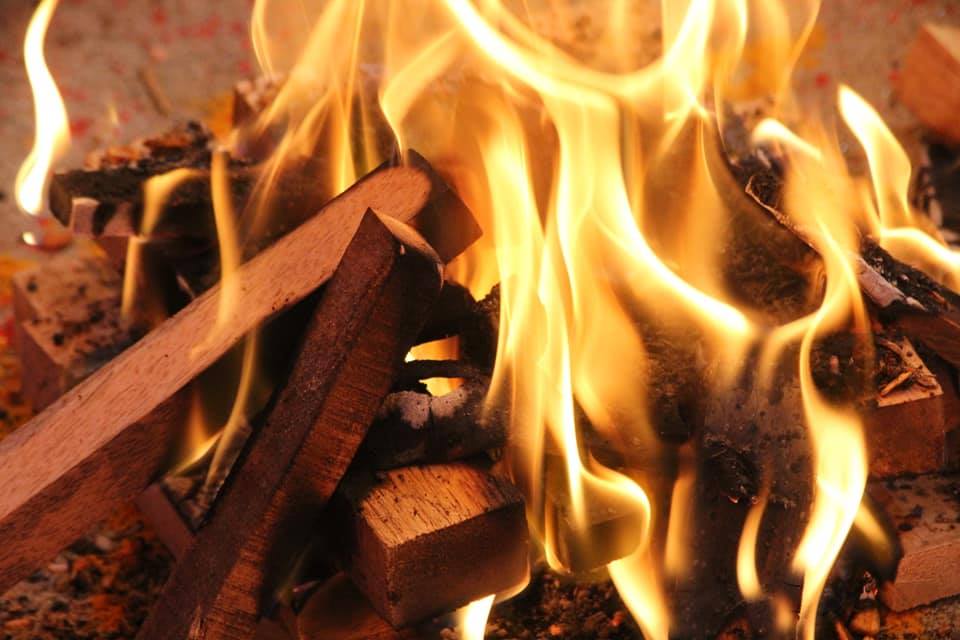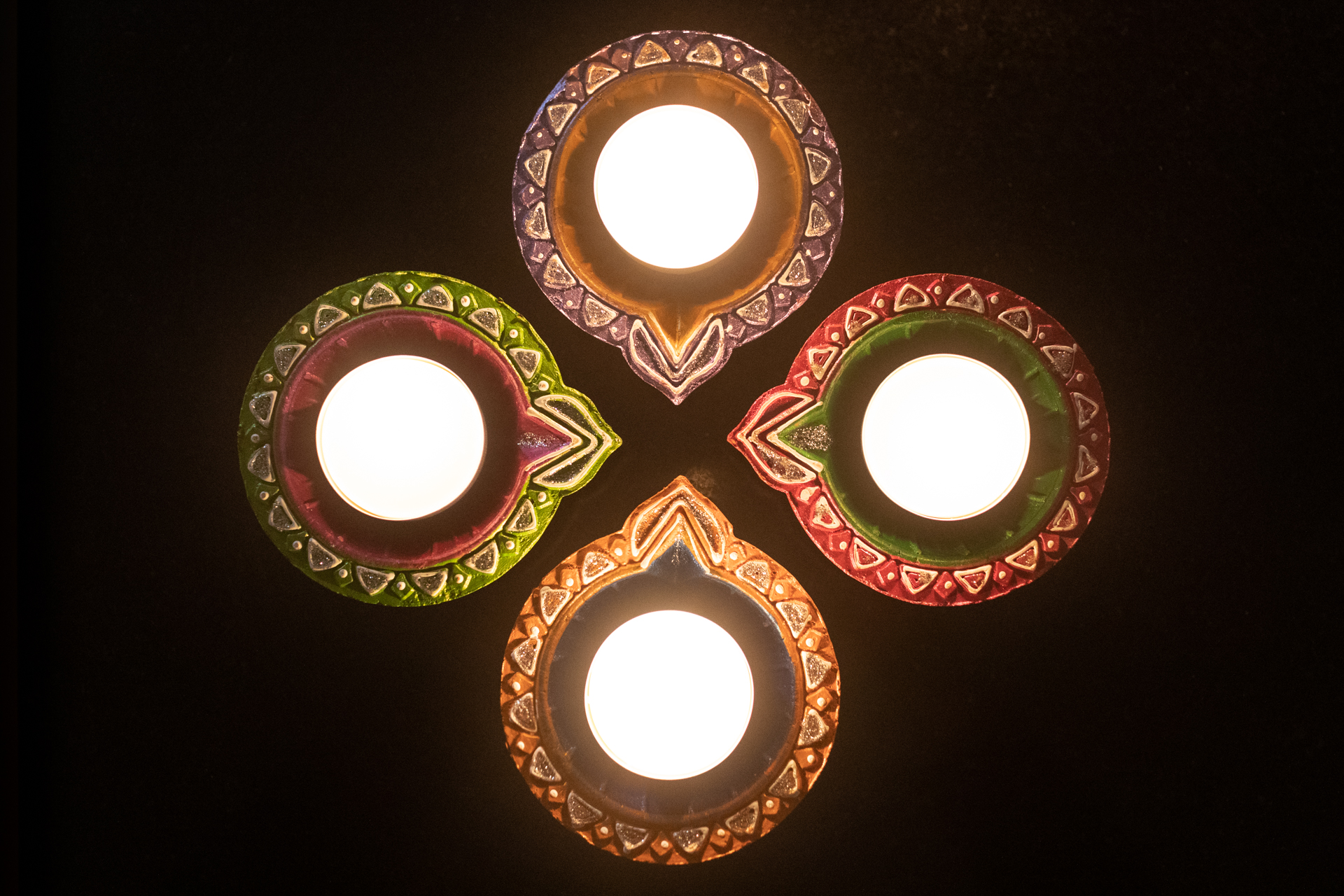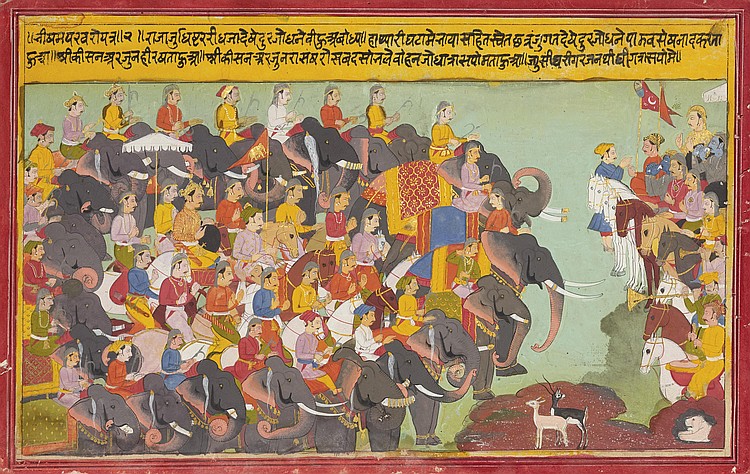|
Ghee
Ghee is a type of clarified butter, originating from India. It is commonly used in India for cooking, as a traditional medicine, and for religious rituals. Description Ghee is typically prepared by simmering butter, which is churned from cream (traditionally made by churning the topmost layer of curd, which is also called the ''Bilona'' method), skimming any impurities from the surface, then pouring and retaining the clear liquid fat while discarding the solid residue that has settled to the bottom. Spices can be added for flavor. The texture, color, and taste of ghee depend on the quality of the butter, the milk source used in the process, and the duration of boiling time. Etymology The word ''ghee'' comes from sa, ÓżśÓźāÓżż (', ) 'clarified butter', from ''ghß╣ø-'' 'to sprinkle'. In Dravidian languages, it is also known as te, Ó░©Ó▒åÓ░»Ó▒ŹÓ░»Ó░┐ '('neyyi''), ta, Ó«©Ó»åÓ«»Ó»Ź or Ó«żÓ»üÓ«¬Ó»ŹÓ«¬Ó«ĢÓ««Ó»Ź (''tuppakam''), ml, Ó┤©ÓĄåÓ┤»ÓĄŹÓ┤»ÓĄŹ (''ney'') and kn, Ó▓żÓ│ ... [...More Info...] [...Related Items...] OR: [Wikipedia] [Google] [Baidu] |
Clarified Butter
Clarified butter is milk fat rendered from butter to separate the milk solids and water from the butterfat. Typically, it is produced by melting butter and allowing the components to separate by density. The water evaporates, some solids (i.e. whey proteins) float to the surface and are skimmed off, and the remainder of the milk solids (casein) sink to the bottom and are left behind when the butterfat (which would then be on top) is poured off or separated with a separatory funnel or a gravy fat separator. This butterfat is the clarified butter. Commercial methods of production also include direct evaporation, but may also be accomplished by decantation and centrifugation followed by vacuum drying; or direct from cream by breaking the emulsion followed by centrifugation. Properties Clarified butter has a higher smoke point () than regular butter (), and is therefore preferred in some cooking applications, such as saut├®ing. Clarified butter also has a much longer shelf life th ... [...More Info...] [...Related Items...] OR: [Wikipedia] [Google] [Baidu] |
Aarti
''Arti'' (Sanskrit: ─Ćr─ütrika, Hindi: ─Ćrt─½) is a Hindu ritual employed in worship, often part of '' puja'', in which light (usually from a flame) is offered to one or more deities. ''Arti(s)'' also refers to the songs sung in praise of the deity, when the light is being offered. Origin Arti is derived from the Sanskrit word () which means something that removes , darkness (or light waved in darkness before an icon). A Marathi language reference says it is also known as ( sa, Óż«Óż╣ÓżŠÓż©ÓźĆÓż░ÓżŠÓż×ÓźŹÓż£Óż©ÓżŠ). ''Arti'' is said to have descended from the Vedic concept of fire rituals, or '' homa/yajna''. In the traditional ''arti'' ceremony, the flower represents the earth (solidity), the water and accompanying handkerchief correspond with the water element (liquidity), the ghee or oil lamp represents the fire component (heat), the peacock fan conveys the precious quality of air (movement), and the yak-tail fan represents the subtle form of ether (space). The incense rep ... [...More Info...] [...Related Items...] OR: [Wikipedia] [Google] [Baidu] |
Vedic Period
The Vedic period, or the Vedic age (), is the period in the late Bronze Age and early Iron Age of the history of India when the Vedic literature, including the Vedas (ca. 1300ŌĆō900 BCE), was composed in the northern Indian subcontinent, between the end of the urban Indus Valley civilisation and a second urbanisation, which began in the central Indo-Gangetic Plain BCE. The Vedas are liturgical texts which formed the basis of the influential Brahmanical ideology, which developed in the Kuru Kingdom, a tribal union of several Indo-Aryan tribes. The Vedas contain details of life during this period that have been interpreted to be historical and constitute the primary sources for understanding the period. These documents, alongside the corresponding archaeological record, allow for the evolution of the Indo-Aryan and Vedic culture to be traced and inferred. The Vedas were composed and orally transmitted with precision by speakers of an Old Indo-Aryan language who had migrate ... [...More Info...] [...Related Items...] OR: [Wikipedia] [Google] [Baidu] |
Panchamruta
Panchamrita (, lit. ''five s'') is a mixture of five foods used in Hindu as well as Jain worship and puja and Abhiß╣Żeka It is often used as an offering during pooja post which it is distributed as prasad. There are regional variations in the ingredients used. In Nepal and North India, usually honey or sugar, cow milk, curd and ghee are used as the main ingredients. In Tamil Nadu, Panchamritam () is a mixture of banana, ghee, honey, jaggery and cardamom. In addition, other substances like seedless dates and sugar candies are added. Keralites may also include tender coconut. Some recipes also include grapes. Palani Dhandayuthapani temple located in Tamil Nadu is popular for its unique panchamirtham which uses Virupatchi hill bananas grown in the surrounding Palani hills. It received its unique Geographical indication in 2019 from the Government of India The Government of India (ISO: ; often abbreviated as GoI), known as the Union Government or Central Government ... [...More Info...] [...Related Items...] OR: [Wikipedia] [Google] [Baidu] |
Yagna
Yajna ( sa, Óż»Óż£ÓźŹÓż×, yaj├▒a, translit-std=IAST, sacrifice, devotion, worship, offering) refers in Hinduism to any ritual done in front of a sacred fire, often with mantras.SG Nigal (1986), Axiological Approach to the Vedas, Northern Book, , pages 80ŌĆō81 Yajna has been a Vedic tradition, described in a layer of Vedic literature called Brahmanas, as well as Yajurveda. The tradition has evolved from offering oblations and libations into sacred fire to symbolic offerings in the presence of sacred fire (Agni). Yajna rituals-related texts have been called the ''Karma-kanda'' (ritual works) portion of the Vedic literature, in contrast to ''Jnana-kanda'' (knowledge) portion contained in the Vedic Upanishads. The proper completion of Yajna-like rituals was the focus of Mimansa school of Hindu philosophy. Yajna have continued to play a central role in a Hindu's rites of passage, such as weddings. Modern major Hindu temple ceremonies, Hindu community celebrations, or monastic ini ... [...More Info...] [...Related Items...] OR: [Wikipedia] [Google] [Baidu] |
Homa (ritual)
In the Vedic Hinduism, a homa (Sanskrit: Óż╣ÓźŗÓż«) also known as havan, is a fire ritual performed on special occasions by a Hindu priest usually for a homeowner (" grihastha": one possessing a home). The grihasth keeps different kinds of fire including one to cook food, heat his home, amongst other uses; therefore, a Yajna offering is made directly into the fire. A homa is sometimes called a "sacrifice ritual" because the fire destroys the offering, but a homa is more accurately a "votive ritual". The fire is the agent, and the offerings include those that are material and symbolic such as grains, ghee, milk, incense and seeds. It is rooted in the Vedic religion, and was adopted in ancient times by Buddhism and Jainism. The practice spread from India to Central Asia, East Asia and Southeast Asia. Homa rituals remain an important part of many Hindu ceremonies, and variations of homa continue to be practiced in current-day Buddhism, particularly in parts of Tibet and Japan. It ... [...More Info...] [...Related Items...] OR: [Wikipedia] [Google] [Baidu] |
Diya (light)
A diya, diyo, deya, deeya, dia, divaa, deepa, deepam, deep , deepak or saaki is an oil lamp made from clay or mud with a cotton wick dipped in Oil or ghee. These lamps are commonly used in the Indian subcontinent and they hold sacred prominence in Hindu, Sikh, Buddhist and Jain prayers as well as religious rituals, ceremonies and festivals including Diwali. Traditional use Clay diyas are symbolically lit during prayers, rituals and ceremonies; they are permanent fixtures in homes and temples. The warm, bright glow emitted from a diya is considered auspicious - it represents enlightenment, prosperity, knowledge and wisdom. Diyas represent the triumph of light over dark, good over evil with the most notable example of this being on the day of Diwali. Diwali is celebrated every year to celebrate the triumph of good over evil as told in the Hindu epic, the Ramayana. Diwali marks the day Lord Shri Rama, Goddess Sita devi and Lakshmana returned home to Ayodhya after 14 years in ... [...More Info...] [...Related Items...] OR: [Wikipedia] [Google] [Baidu] |
Yajurveda
The ''Yajurveda'' ( sa, Óż»Óż£ÓźüÓż░ÓźŹÓżĄÓźćÓż”, ', from ' meaning "worship", and ''veda'' meaning "knowledge") is the Veda primarily of prose mantras for worship rituals.Michael Witzel (2003), "Vedas and Upaniß╣Żads", in ''The Blackwell Companion to Hinduism'' (Editor: Gavin Flood), Blackwell, , pages 76-77 An ancient Vedic Sanskrit text, it is a compilation of ritual-offering formulas that were said by a priest while an individual performed ritual actions such as those before the yajna fire. Yajurveda is one of the four Vedas, and one of the scriptures of Hinduism. The exact century of Yajurveda's composition is unknown, and estimated by Witzel to be between 1200 and 800 BCE, contemporaneous with Samaveda and Atharvaveda. The Yajurveda is broadly grouped into two ŌĆō the "black" or "dark" (''Krishna'') Yajurveda and the "white" or "bright" (''Shukla'') Yajurveda. The term "black" implies "the un-arranged, unclear, motley collection" of verses in Yajurveda, in contrast t ... [...More Info...] [...Related Items...] OR: [Wikipedia] [Google] [Baidu] |
Bhang
Bhang (IAST: ''Bh─üß╣ģg'') is an edible preparation made from the leaves of the cannabis plant originating from the Indian subcontinent. It has been used in food and drink as early as 1000 BC in ancient India. Bhang is traditionally distributed during the spring festival of Maha Shivaratri and Holi. Bhang is mainly used in bhang shops, which sell the cannabis-infused Indian drinks bhang lassi and bhang thandai. Western documentation Garcia de Orta, a Portuguese Jewish physician based in Goa, wrote extensively on ''bangue'' in his ''Col├│quios dos simples e drogas da India'' (1563), including its recreational use by Bahadur Shah of Gujarat and by many Portuguese. He explicitly rejected the notion of the Indian plant that produces ''bangue'' being the same as the European hemp plant (''alcanave''). In 1596, a Dutchman, Jan Huyghen van Linschoten, wrote three pages on "Bangue" in a work documenting his journeys in the East. He also mentioned the Egyptian hashish, the Turkish ... [...More Info...] [...Related Items...] OR: [Wikipedia] [Google] [Baidu] |
Kaurava
''Kaurava'' is a Sanskrit term which refers to descendants of Kuru, a legendary king of India who is the ancestor of many of the characters of the epic ''Mahabharata''. Usually, the term is used for the 100 sons of King Dhritarashtra and his wife Gandhari. Duryodhana, Dushasana, Vikarna and Chitrasena are the most popular among the brothers. They also had a sister named Dussala and a half-brother named Yuyutsu. Etymology The term ''Kauravas'' is used in the ''Mahabharata'' with two meanings: *The wider meaning is used to represent all the descendants of Kuru. This meaning, which includes the Pandava brothers, is often used in the earlier parts of popular renditions of the ''Mahabharata''. *The narrower but more common meaning is used to represent the elder line of the descendants of Kuru. This restricts it to the children of King Dhritarashtra, excluding the children of his younger brother, Pandu, whose children form the Pandava line. The rest of this article deals with ... [...More Info...] [...Related Items...] OR: [Wikipedia] [Google] [Baidu] |
Mahabharata
The ''Mah─übh─ürata'' ( ; sa, Óż«Óż╣ÓżŠÓżŁÓżŠÓż░ÓżżÓż«ÓźŹ, ', ) is one of the two major Sanskrit epics of ancient India in Hinduism, the other being the ''R─üm─üyaß╣ća''. It narrates the struggle between two groups of cousins in the Kurukshetra War and the fates of the Kaurava and the P─üß╣ćßĖŹava princes and their successors. It also contains philosophical and devotional material, such as a discussion of the four "goals of life" or ''puruß╣Ż─ürtha'' (12.161). Among the principal works and stories in the ''Mah─übh─ürata'' are the '' Bhagavad Gita'', the story of Damayanti, the story of Shakuntala, the story of Pururava and Urvashi, the story of Savitri and Satyavan, the story of Kacha and Devayani, the story of Rishyasringa and an abbreviated version of the ''R─üm─üyaß╣ća'', often considered as works in their own right. Traditionally, the authorship of the ''Mah─übh─ürata'' is attributed to Vy─üsa. There have been many attempts to unravel its historical growth and c ... [...More Info...] [...Related Items...] OR: [Wikipedia] [Google] [Baidu] |
Milk
Milk is a white liquid food produced by the mammary glands of mammals. It is the primary source of nutrition for young mammals (including breastfed human infants) before they are able to digestion, digest solid food. Immune factors and immune-modulating components in milk contribute to milk immunity. Early-lactation milk, which is called colostrum, contains antibody, antibodies that strengthen the immune system, and thus reduces the risk of many diseases. Milk contains many nutrients, including protein and lactose. As an agricultural product, dairy milk is Milking, collected from farm animals. In 2011, Dairy farming, dairy farms produced around of milk from 260 million dairy cows. India is the world's largest producer of milk and the leading exporter of skimmed milk powder, but it exports few other milk products. Because there is an ever-increasing demand for dairy products within India, it could eventually become a net importer of dairy products. New Zealand, Germany and the ... [...More Info...] [...Related Items...] OR: [Wikipedia] [Google] [Baidu] |


_Aarti_Thali%2C_Prayer_Plate_India.jpg)









.jpg)